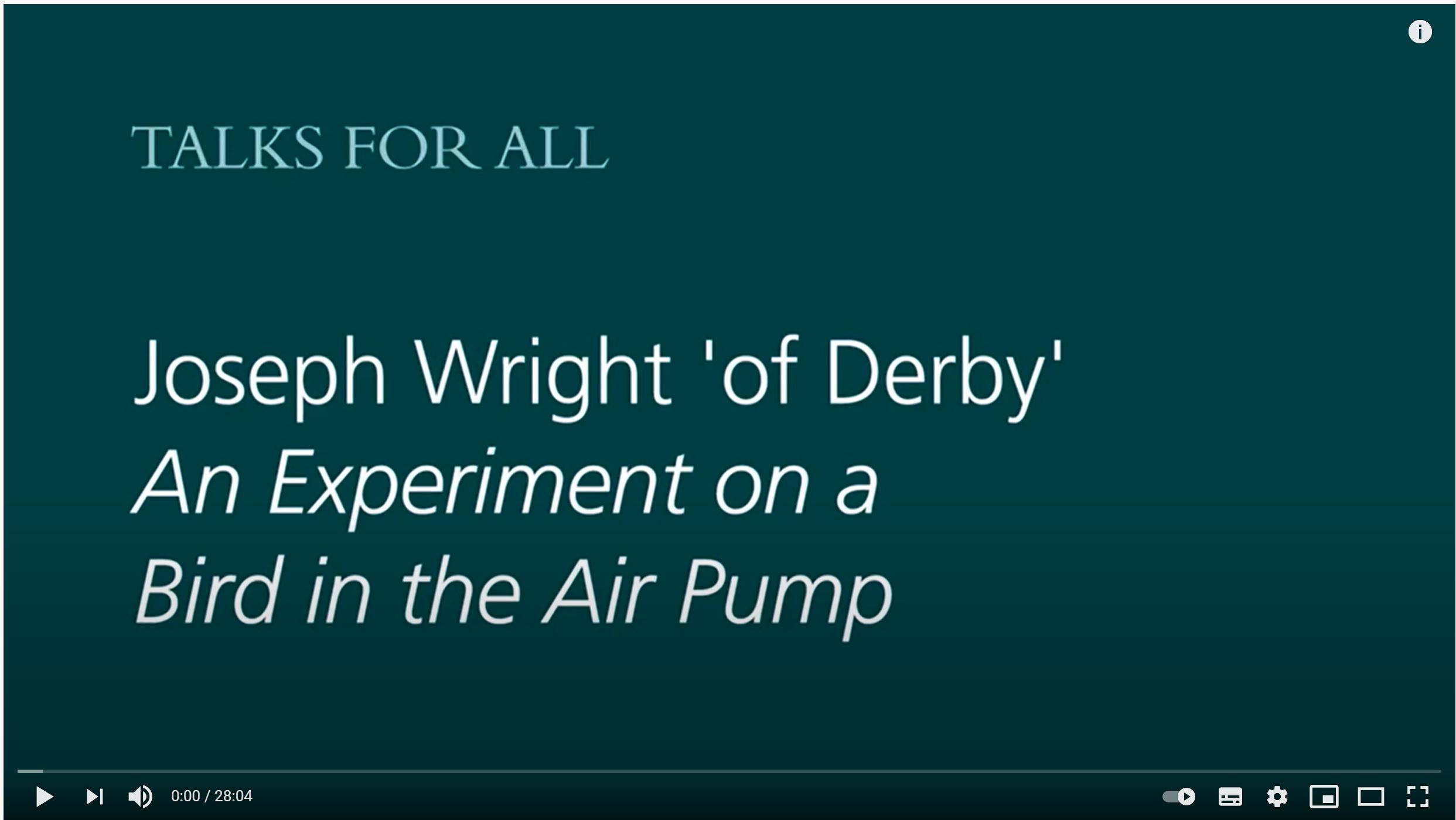Joseph Wright 'of Derby' | An Experiment on a Bird in the Air Pump
About this Painting
An audience has gathered around a lecturer to watch an experiment. It is night, and the room is lit by a single candle that burns behind a large rounded glass containing a diseased human skull. A white cockatoo has been placed in a glass container from which the air is being pumped to create a vacuum. Will the lecturer expel the air completely and kill the bird, or allow the air back in and revive it? Wright focuses on the viewers‘ differing reactions – from the girl unable to watch to the lovers with eyes only for each other.
This is the largest, most ambitious and dramatic of the series of ’candlelight' pictures Wright painted during the 1760s. It captures the drama of a staged scientific experiment but it also functions as a vanitas – a painting concerning the passing of time, the limits of human knowledge and the frailty of life itself(text courtesy of the National Gallery).
An in-depth analysis of this painting is available on The National Gallery Website.
Connection to last week's item:William Harvey, the author of the notes written in part four of BL Cotton MS Vitellius C III was a contemporary and colleague of Robert Boyle, whose experiment is recreated by a natural philosopher in this painting. For more information about their collaboration see R. A. Hunter and I. MacAlpine, 'William Harvey and Robert Boyle' in The Royal Society Journal of the History of Science.
Viewer
Further Resources

from 'An Experiment on a Bird in the Air Pump' about the time of the Industrial Revolution and how this painting represent the Enlightenment that was taking place around the artist?.
Click here for the full video.